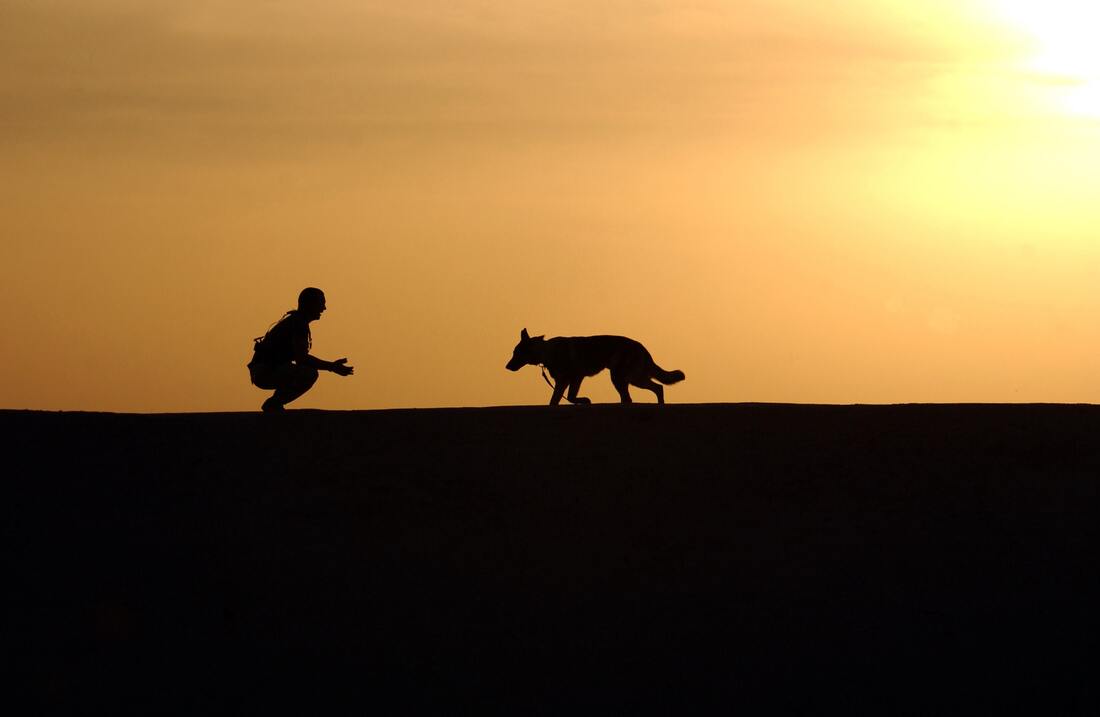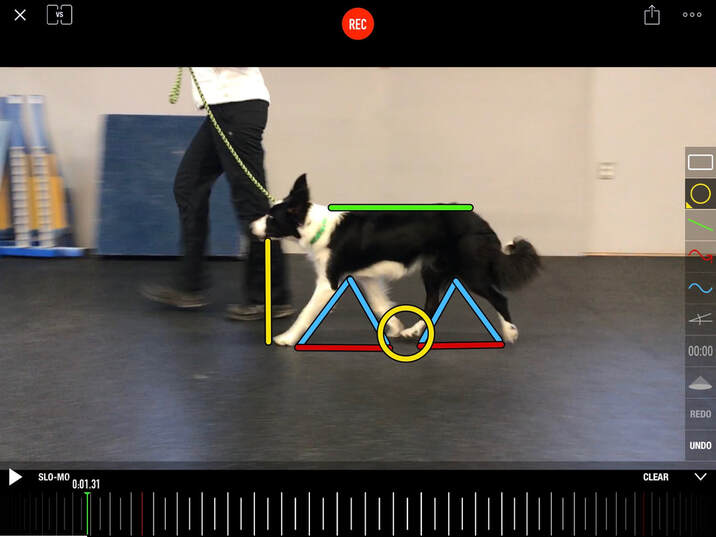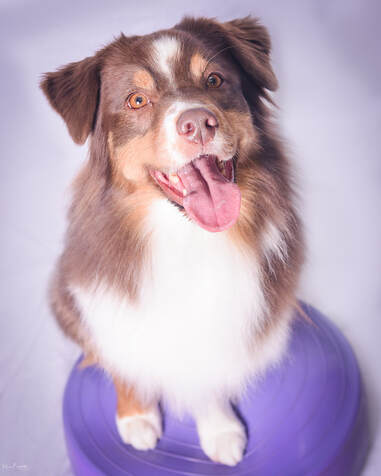|
As dog owners we all dread the day our dog gets an injury. It's generally not a matter of if but when an injury will occur. Whether your dog is running around in the backyard or competing in a sport, all activity comes with a risk of injury, it's a fact of life. Accidents happen and injuries occur but that doesn't mean we can't be proactive and help to reduce our dogs chances of an injury. So what can we as our dogs biggest advocates do to help reduce their chance of injury and give them the best chance of a quick recovery? Let's review some simple and effective strategies to prevent injuries with your dogs. With humans, we see a greater risk of injury in the contact sports and in young athletes due to overuse. Think about the activities your dog is doing daily, weekly, or monthly. Are they rough housing at the dog park colliding with other dogs? Or are they running high speed at a flyball match, hitting the box and turning on a dime as they race back over hurdles? Maybe your young working dog just doesn't know when to quit or your agility dog, whose love of the sport, overrides their good sense. Perhaps your dog is just clumsy, forever on a quest to discover what happens when an unstoppable force meets an immovable object. A dog with an injury-free life is a rare dog indeed! The risks of an active lifestyle far outweigh the risk of injury and I've always been a big advocate that the best way to deal with injuries is to prevent them before they happen! As a dog owner, there are MANY things that you can do to reduce the risk of an injury. Quarterly AssessmentsAlthough injuries may seem sudden, not many injuries “just happen.” A dog that yelps suddenly while running and holding a leg up in apparent pain may seem like a sudden onset injury but that might not always be the case. Many injuries occur because your dog has been moving in an unbalanced way for an extended period of time. The imbalance causes some parts of the body to undergo greater wear and tear, although not enough to cause noticeable lameness. Over time, however, those stressed areas can become more vulnerable to injury. At MCR, we recommend 4 baseline assessments per year (every 3 months). These assessments will include spine and soft tissue evaluation, joint evaluation, muscle girth measurements, functional tests for balance, strength and body awareness. Benefits of these assessments include:
Avoid Over TrainingWe all need breaks! Just think about how you feel after leg day at the gym, there’s no way you want to go for a jog after that!! Dogs are designed differently than humans and the way they’re designed means that they engage all of their body when they move. That means that unlike humans who can hit the gym the next day and focus on a different part of their body, dogs need to take a longer break before getting back to work. We also have to take into consideration that weekly rest days are critical in your dogs day to day activities. Dogs do not make the progress in their strength, power, balance or flexibility when they are actually working out and completing the exercises but rather when their bodies rest and recover. The work out is the stimulus but the rest provided is the body's physical response and where the changes actually happen! On rest day, I do not ask my dogs for any structured or formal training/exercise. Also keep in mind to avoid repetitive actions and motions. Doing too much of the same activity can lead to both mental and physical exhaustion. This exhaustion can lead to carelessness and increase your dogs risk of injury. Over the course of a year, we recommend taking one month off once or twice a year (depending on your current training/competition schedule) to give your dog a break from their sport specific training. It is still imperative that your dog stays active during this break but with other activities (e.g. hikes, conditioning work). For help on what to do during a break get in touch with us to learn which exercises are critical during an offseason! Warm-Up and Cool DownAt MCR, we are huge advocates for warm-ups and cool-downs. So much so I've written a book on how important it is to preventing injury! It’s a simple thing but how many of us actually do this in day-to-day life? Whether you’re competing at a show or taking your dog to the park, warming up prior to exercise and cooling down afterwards is a simple and powerful way to prevent injury! Here are some key ways to warm up and cool down your dog.
Conditioning can help, reduce the chance of injury, and improve your dog’s flexibility, mobility, body awareness, and overall muscular strength. A tailored exercise program will also address areas of weakness your dog may have. Best of all, it’s super easy to do and doesn’t take a lot of time out of your day to generate results! Research has shown that strength and resistance training improves strength, power, and speed, while also increasing muscle mass and decreasing the risk of injury. It is commonly thought that strength training should be an important part of any training program for athletes (both human and canine!). Research has also shown that well-trained athletes require a greater amount of specificity, individualization, and variation with their condition programs. Recognizing the physical demands of your dog's favourite activity can help you figure out the type of conditioning program you need to implement. Do you have a dog that likes to run, one that likes to jump, or one that likes to swim? Each activity will place a different physical demand on your dog and will need to have a conditioning program thats tailored to suit. Know your Breed! Shades (K Elizabeth) Shades (K Elizabeth) What’s the most important game we play with our dogs? Developing a relationship! We spend more time relating to our dogs then we do competing and we want our dogs to live as long as possible and have longevity in ALL activities! In humans, some body types are better suited for certain games of sports (e.g. in gymnastics – it's advantageous to be lean and small!) Dogs are also built for different games! While a Great Dane may do well in agility, he's going to encounter different challenges than his Sheltie counterpart. Breed form and function places physiological and anatomical limitations on conditioning – you need to understand your breed's unique considerations and limitations as this will help to properly guide program development and injury prevention. If you have a large breed dog with a poorly angulated front, you will need front limb strengthening and injury prevention exercises in your conditioning program, as well as spine and core strengthening to help avoid compensation strategies. Additionally, if you have a long back dog who is more susceptible to back injuries, core stabilization and strengthening is paramount to minimize injury and protect their back Knowing your breed and the potential challenges or limitations of your dog is an important part in planning a training session. Ask yourself, what exercises you might have to include in your program to augment any breed limitations and how can you best prevent a potential injury? Do you have a dog with a long back who is asked to do a lot of bending? Does your breed have a history of hip or elbow dysplasia? Dogs come in a variety of structures, sizes, and shapes which have their advantages and disadvantages for the activities we engage in with them. Remember, many breeds have been developed over hundreds of years to perform a specific job and their build has been developed over time to give them superior performance, but sometimes the job they were bred to do is different for the activity we would like to do with them. Also recognize that some dogs may have had alterations done to them by their breeder. Does your standard call for a docked tail? This could mean that your dog will have an increased demand placed on their body when it comes to jumps and turns. Is your dog missing their front dewclaws? Research has shown that the front dewclaws may have a function in preventing torque on the limb, and as such, the removal of dewclaws may predispose the dog to injury. To learn more about the importance of dewclaws, check out my previous blog on this topic. If you dog is missing their front dewclaws a solid strength training program is a definite must! Injuries are not the end of the world!Early preventative conditioning work, finding appropriate and safe activities that are suitable for your dog's age, body weight, and build, and making sure your dog doesn't over do things are key factors in preventing injuries. But even with the best preventive measures in place, injuries can still happen. When working or playing with your dog keep in mind a couple things...
Know that accidents happen and that while we can do lots to minimize the damage we still may be faced with dealing with an injury. It's not the end of the world! A dog who has had regular conditioning throughout their life prior to injury is in a better place to manage and rehab from an injury! If you're worried your dog may be dealing with an injury or if your wondering what may be appropriate exercise for your dog I'm more than happy to help and talk you through some best practices!
1 Comment
4/10/2023 06:12:04 pm
Preventative dog DNA testing of dogs could possibly also help canine longevity.
Reply
Leave a Reply. |
AuthorCarolyn McIntyre Archives
June 2024
Categories
All
|




 RSS Feed
RSS Feed